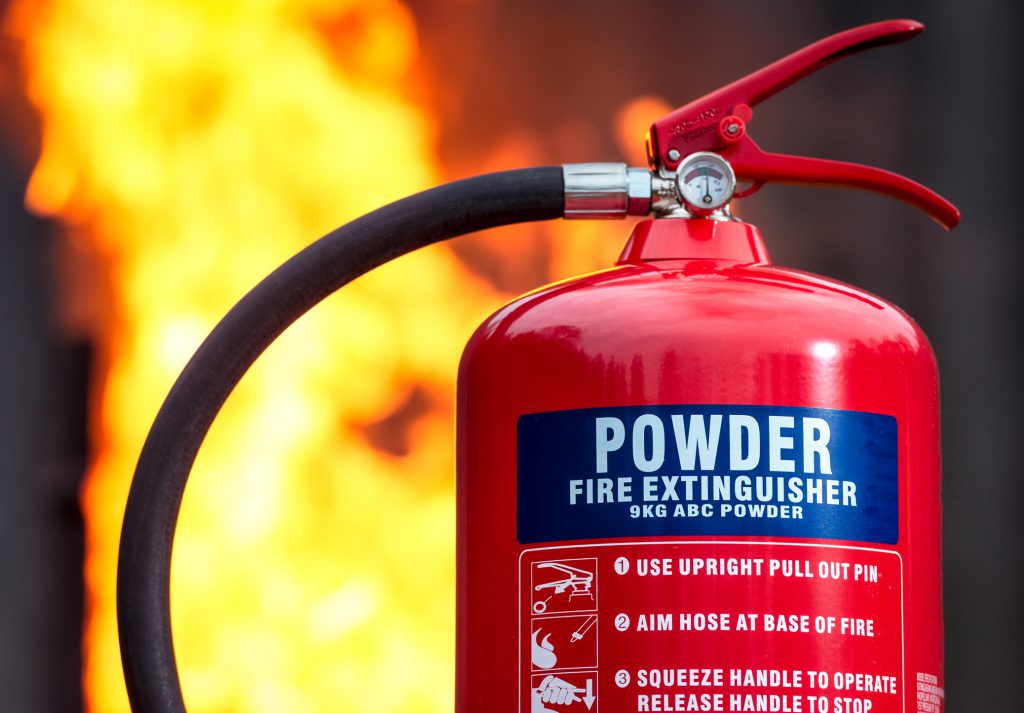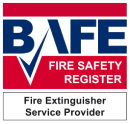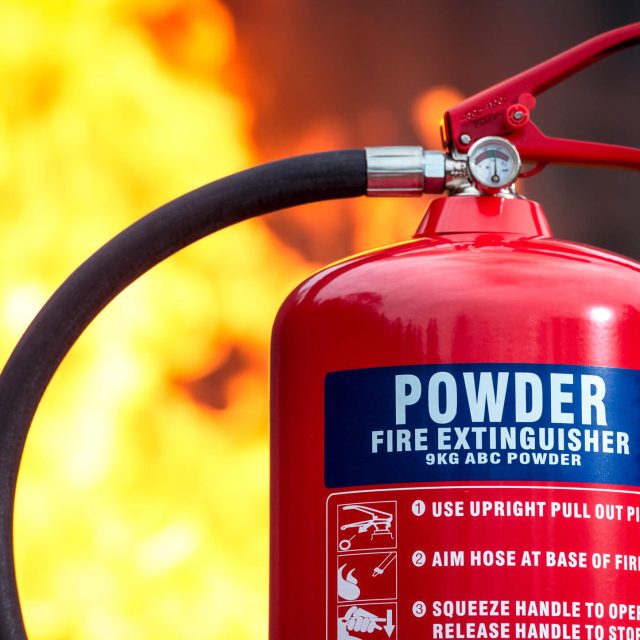28 April 2021
How to Use a Dry Powder Fire Extinguisher
Every business is more prone to certain types of fire than others, however minor or major that risk might be. For this reason, it’s crucial that you have the right type of fire extinguisher installed, and that you and your staff know how to safely and effectively operate said extinguisher in the event of an emergency. In this article, Fire & Security Group are going to tell you how to use a dry powder fire extinguisher.

What is a Dry Powder Extinguisher?
Identified with a blue band, dry powder extinguishers are some of the most common fire extinguishers around – they’re often found in residential buildings like Houses of Multiple Occupation (HMOs). The powder within the extinguishers is very fine sodium bicarbonate.
What Types of Fires can Dry Powder Extinguishers be used on?
Dry powder extinguishers are quite versatile. They can be used on the following classes of fire:
- Class A – Fires involving paper, wood, and textiles
- Class B – Fires involving flammable liquids such as paints and petrol
- Class C – Fires involving flammable gases like butane and methane
How does a Dry Powder Extinguisher work?
Different extinguishers contain a substance designed to impact the ‘fire triangle’ in a certain way. In the case of dry powder extinguishers, the fine powder within them acts as a blanket, smothering the fire, coating the fuel and preventing the fire from growing.
How do I use a Dry Powder Extinguisher?
Although each fire extinguisher is different, there’s a general rule for operating fire extinguishers safely and effectively – the PASS system. These four steps are easy to follow and effective when done correctly, and we’re going to run through them here.
Please note: Make sure you are a safe distance away from the fire before trying to extinguish it, and only attempt to extinguish it if it’s of manageable size. If you have any doubts, evacuate the building and call the fire brigade.
P – Pull
Pull the pin from the fire extinguisher. This unlocks the extinguisher so that the material within can be expelled. If you don’t pull the pin, you won’t be able to use it.
A – Aim
For solid materials, you should aim the fire extinguisher nozzle at the base of the fire and pull the trigger, using a sweeping motion across the area of the fire.
For liquids, you should aim the extinguisher at the nearest edge of the fire, driving it backwards with a sweeping motion. If the liquid is still flowing, you should aim at the base of the fire and sweep upwards to extinguish it.
Before trying to extinguish a fire involving gas, make sure the gas supply is turned off. To extinguish the fire, aim straight at it. The same goes for fires involving electrical equipment.
S – Squeeze
Squeeze the handle of the extinguisher to release the dry chemical powder.
S – Sweep
As mentioned in the above steps, use a sweeping motion to ensure you cover the area of the fire.
Use caution when deploying a dry powder extinguisher indoors – the powder can reduce visibility which can be dangerous in tight spaces. Be aware of your exit routes.
Once you have extinguished the fire, pay close attention to it to make sure there’s no chance of reignition.
It’s crucial that you have the right fire extinguishers in your property and all relevant parties know how to operate them safely. With fire risk assessments and fire safety training from Fire and Security Group, we can identify the extinguishers you need, install them in your property and deliver effective training on fire extinguisher operation. All our extinguishers are BS5306-3-approved. For more information, contact us today.

